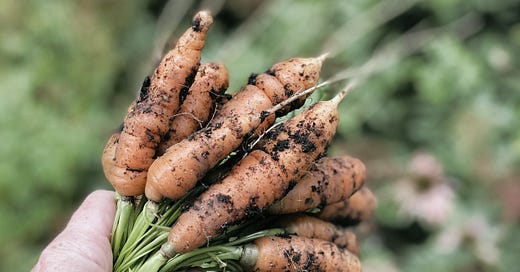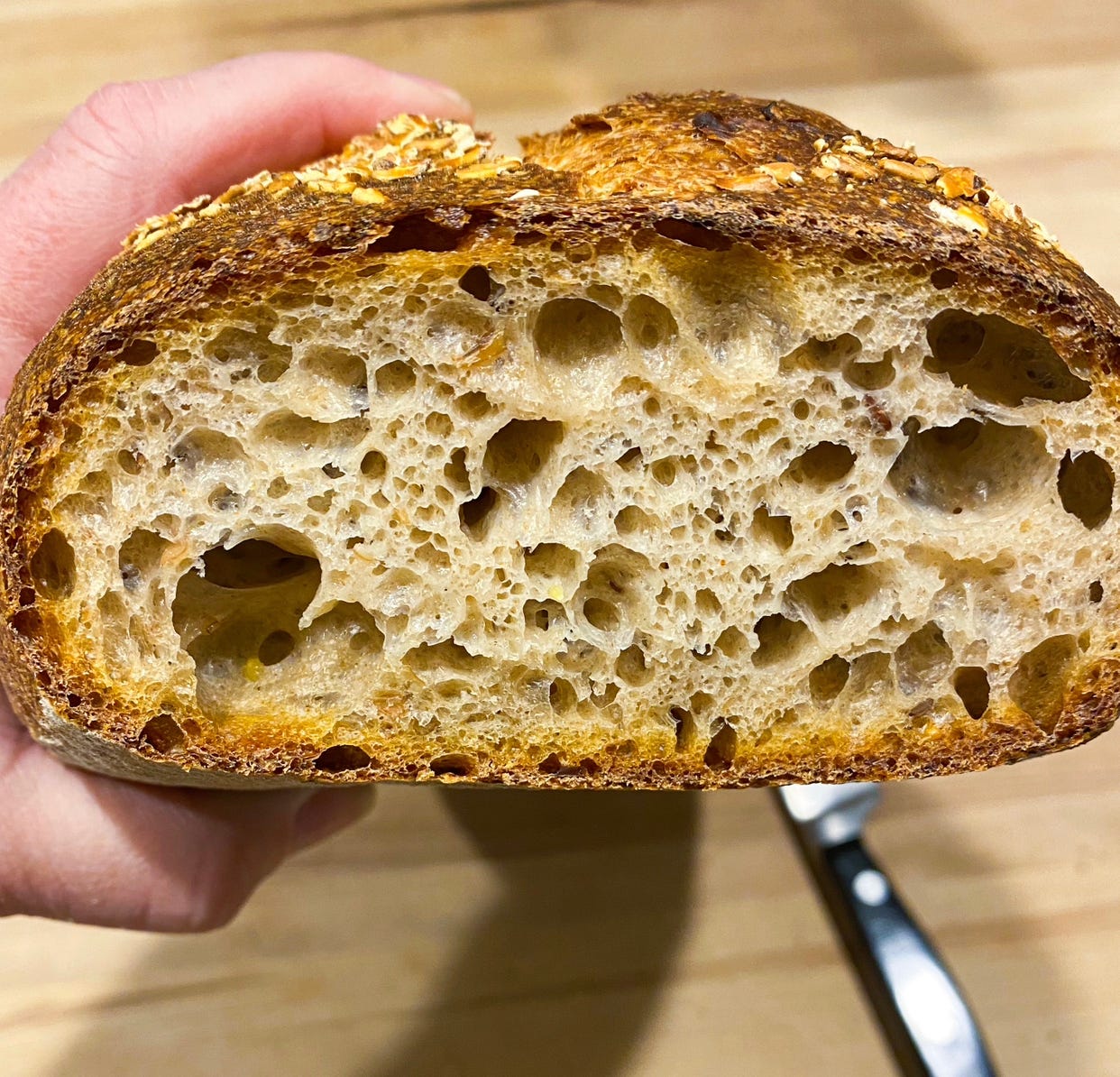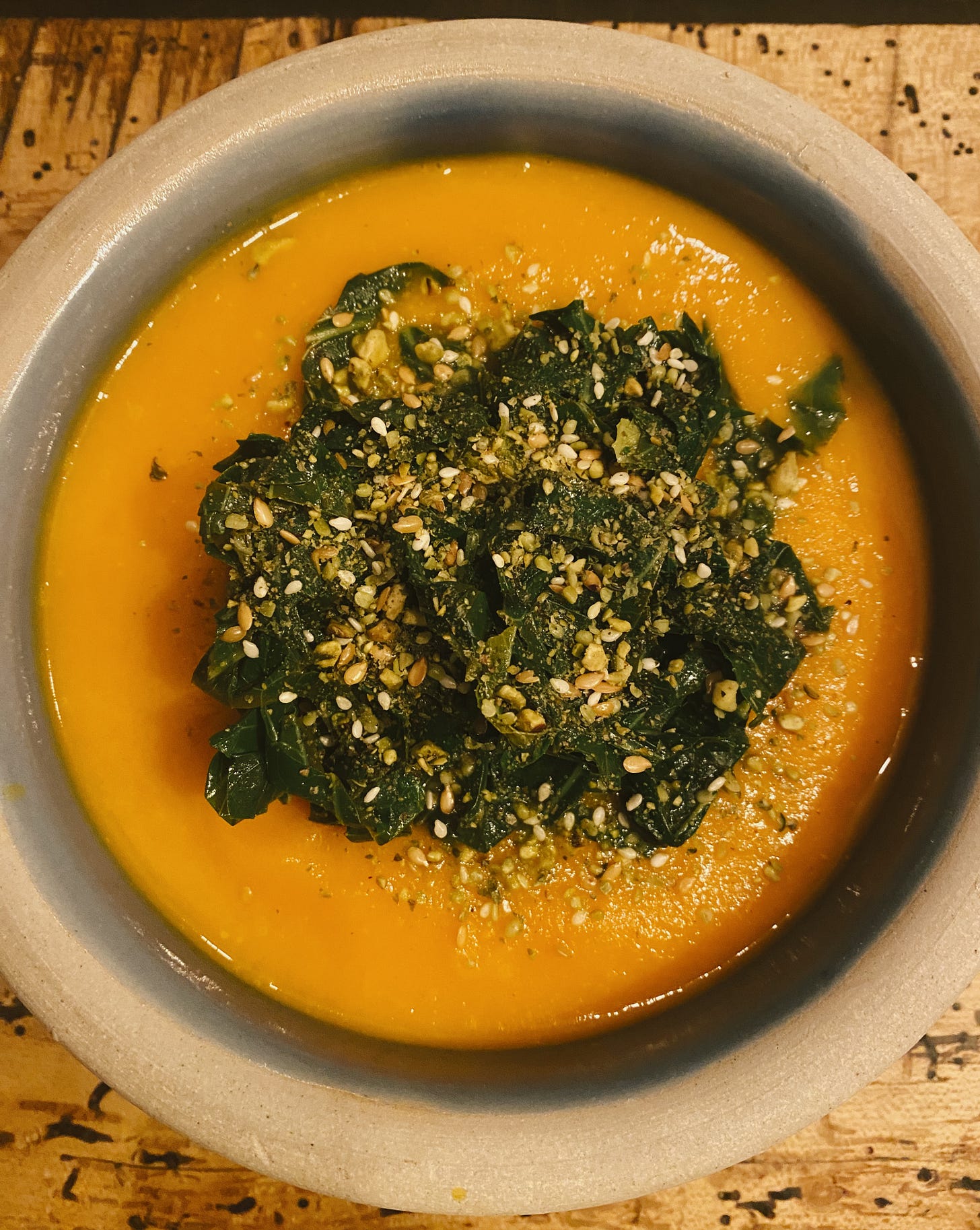I told this to my wife recently:
In the last decade, I’ve had a recurring dream that I’m in a dark, tight space; I’m standing and then I’m kneeling. I use my nails to scratch the dirt walls on either side of me, but it is so cold that I lose the feeling in my hands. In the dream, I hear distant thunder, and time cascades forward, gaining momentum, like a ball rolling downhill; right before it reaches a crescendo, I awaken, gripping and tearing at my sheets with both hands, my heart pounding hard. Usually, the sun is barely up, and it is still dark in our room. The animals are asleep, snoring quietly. Susan is asleep, snoring quietly. I wake wanting water, and strong coffee, and bread — thick, brown, pungent sourdough bread flecked with millet and barley, and germs of hard, winter wheat. And I want soup.
Three or four times a year, this is my dream. It precipitates days and sometimes weeks of contradiction: of drinking too much but worrying about my health. Of being hungry and thirsty but too paralyzed to cook. Of needing to move my body, and unable to do anything but get up and make myself a glass of black tea.
This is the dream that undoes me, that comes with the fear of sleep, of closing my eyes. I don’t want to revisit it; I don’t want to go back there.
This is the dream that undoes me, that comes with the fear of sleep, of closing my eyes. I don’t want to revisit it; I don’t want to go back there. This dream unravels my nervous system like the threads in a cheap, flammable sweater: you pull the end of one string, and the whole thing unravels and falls apart. (Don’t get too close to a candle, or a match. No bonfires; no rallies.)
I never know when this dream is going to revisit me; it is mostly unpredictable, like the weather. I’ve tried to pay attention to patterns: it sometimes happens after I’ve spent a day in the yard, raking. Or cooking for a family holiday. Reading the news too late in the afternoon. Reading a cookbook too late in the evening. It came once after I drove past a massive field of common sunflowers, straining for the light.
I came home from grocery shopping last week with a massive bag of carrots.
I don’t even like carrots that much except for the ones that we grow (they are small and sweet and French ) when we remember to grow them, which we did not this year. I was standing in our local natural foods market in front of the vegetables, staring at them in a daze. A small bag. A big bag. A bigger bag. I put the bigger bag in my cart: four pounds. I grabbed a celeriac and three small russet potatoes. There were beets that were beautiful, rimed with mud, and I lifted up a bunch of golden ones with their greens still attached, freshly dug from a local farm. I put them in my cart because Susan loves them, and feeding her what she loves makes me happy. I’ve tried for years to force myself to eat them, roasting and tossing them with sharp aged goat cheese, orange segments, tarragon, hot red pepper flakes, toasted slivered almonds. But no matter what I do, I hate them the way my father and grandfather did. They taste to my tongue of dust and dirt; they smell of doom.
So: no beets.
I could not find the bread I wanted, or imagined: dense sourdough wheat, sliced thick as though for the Ploughman’s lunch I ate almost every day when I was studying in England back in the eighties. The kind where the whole loaf is so massive that you have to slice the bread width-wise and then each piece in half across the middle. I wanted it spread with heavy European-style butter — Plugra or Wuthrich — which, if she knew about it, would make my cardiologist fire me. I’ve been on a variety of low-carbohydrate diets over the years, and when I am, I have to avoid going to the Atticus Bakery in New Haven because they have an old-fashioned cracked grain porridge bread there that is the size of a small Wheaten terrier. I love it and can eat the whole thing in two days, because this is the bread of my dreams, good or bad.
But at the natural foods market on the day of the carrots: no bread.
Susan did not ask about the massive bag of carrots I unpacked when I got home. She wondered about the celeriac because no one buys celeriac without plans to make soup with it, or roast and mash it with potatoes or rutabaga and six tablespoons of sweet butter.
Soup, I said, pointing to it.
I have yet to make it; it is sitting in the vegetable drawer of the fridge.
I was teaching last night when Susan decided to make carrot soup: Deborah Madison’s version, with tangled collard greens and dukkah. I did not admit to being afraid; that carrots might make me afraid. Afraid to close my eyes, to dream of soup from dusty root vegetables and a thick slice of dense bread, of who I might have been at another place and another time, who genetic testing tells me I once was, on my knees next to my great grandmother, gunfire in the background, scratching the dirt walls around me so long ago, and just yesterday.
Deborah Madison’s Carrot Soup with Tangled Collard Greens in Coconut Butter and Dukkah
From Vegetable Literacy
Deceptively simple to make, Deborah’s soup requires no roasting of carrots, no hoop-jumping or culinary pyrotechnics: it is just very, very good. We added a little cooked white rice to it (as she suggests in her headnote) to give it some heft, but it didn’t need it. The counterpoint of the acidic lime in the collards and the crunch of the dukkah is surprising and delicious.
1 tablespoon ghee
1 onion, thinly sliced
1-1/4 pounds carrots, scrubbed and thinly sliced
1 heaping tablespoon peeled and slivered fresh ginger
1 teaspoon ground cumin
sea salt
For the collards
Several small collard leaves
Sea salt
Coconut butter (we used about 1 tablespoon)
Squeeze of lime juice
Dukkah (we use prepared pistachio dukkah, and love this one)
Warm the ghee in a soup pot over medium heat. Add the onions, carrots, ginger, cumin, and 1 teaspoon salt, give a stir, and cook until wilted, about 6 minutes. Add 4 cups water and bring to a boil. Lower the heat, cover, and simmer until the vegetables are soft, about 20 minutes.
While the soup is cooking, prepare the collards. Trim the stems, stack the leaves, roll them up lengthwise, and then slice thinly crosswise. Bring a skillet of water to a boil, add a little salt and the greens, and simmer until tender, about 2 minutes or longer. Drain well and toss while hot with the coconut butter to taste. Taste for salt, then add the lime juice.
When the soup is ready, puree until smooth. Taste for salt and add more, if needed. If the soup is too thick, thin it with hot water or stock. Reheat the soup if it has cooled.
Ladle the soup into bowls and set a tangle of collards atop each serving and spoon some dukkah into each bowl.
Note: If you are adding rice for more heft, put 1-2 tablespoons of cooked white rice in the bottom of the bowl, and ladle the soup on top of it.
From the archives








This is powerful and moving, haunting and nourishing all at once. Food and dreams /nightmares -- can really relate to that and so beautifully woven together.
A wonderful piece, thank you. I feel connected to the magical, terrifying more than here through the earthiness of root vegetables!